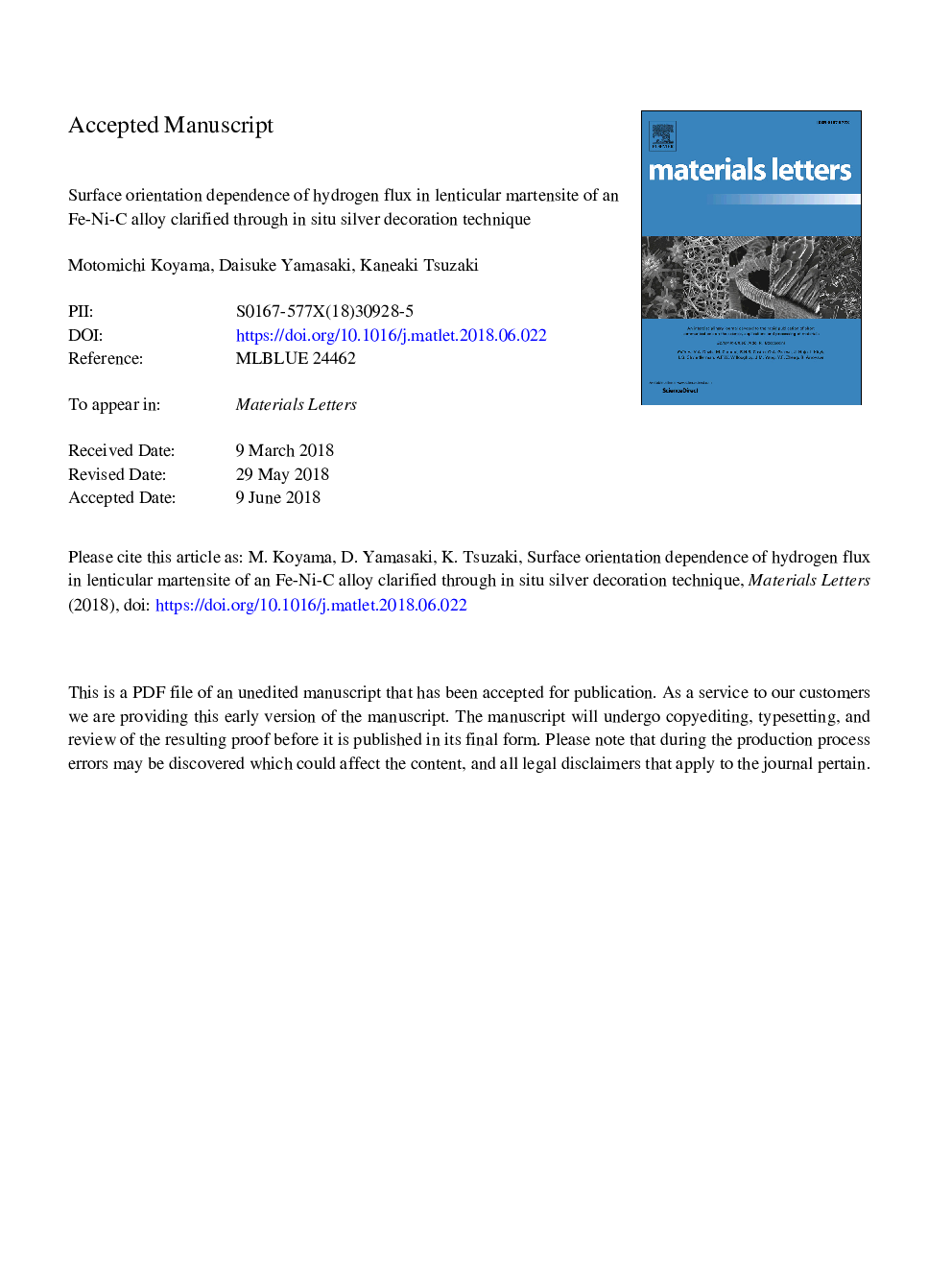| Article ID | Journal | Published Year | Pages | File Type |
|---|---|---|---|---|
| 8012624 | Materials Letters | 2018 | 11 Pages |
Abstract
An in situ silver decoration technique was applied to investigate the effect of microstructure on hydrogen flux in an austenite/αâ²-martensite dual-phase Fe-32Ni-0.2C alloy. Using time-resolved hydrogen mapping, the surface orientation of the body-centered cubic lenticular martensite was found to have a significant effect on hydrogen flux. The hydrogen flux was particularly high at the near-ã0â¯0â¯1ã, while it was the lowest at the near-ã1â¯1â¯1ã surface. This dependence of hydrogen flux on the surface orientation is attributed to hydrogen trapping at dislocations in the martensite. Particularly, ã1â¯1â¯1ã twinning-shear in the martensite enhances hydrogen trapping at dislocations, suppressing hydrogen diffusion in the shortest path of grains orientated to ã1â¯1â¯1ã.
Related Topics
Physical Sciences and Engineering
Materials Science
Nanotechnology
Authors
Motomichi Koyama, Daisuke Yamasaki, Kaneaki Tsuzaki,
